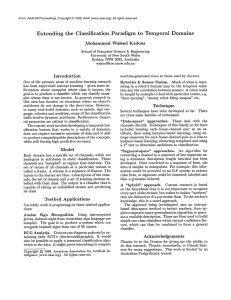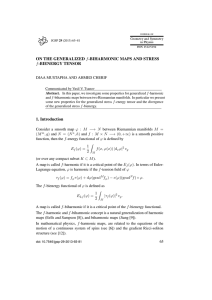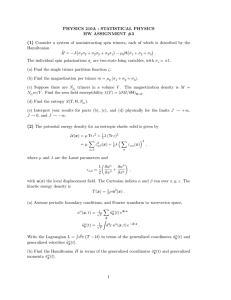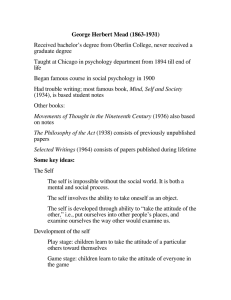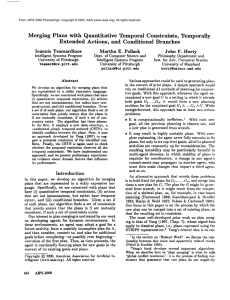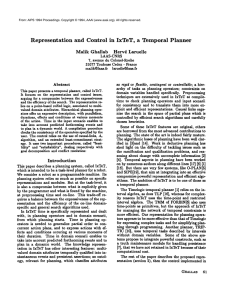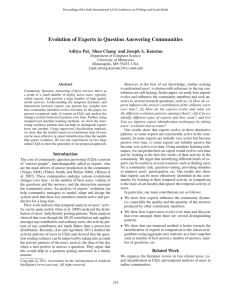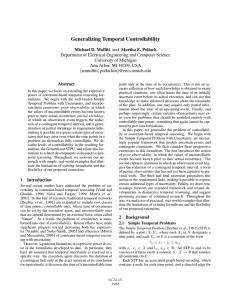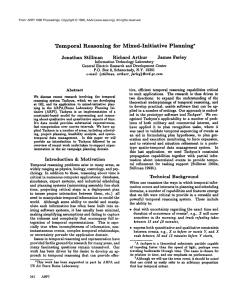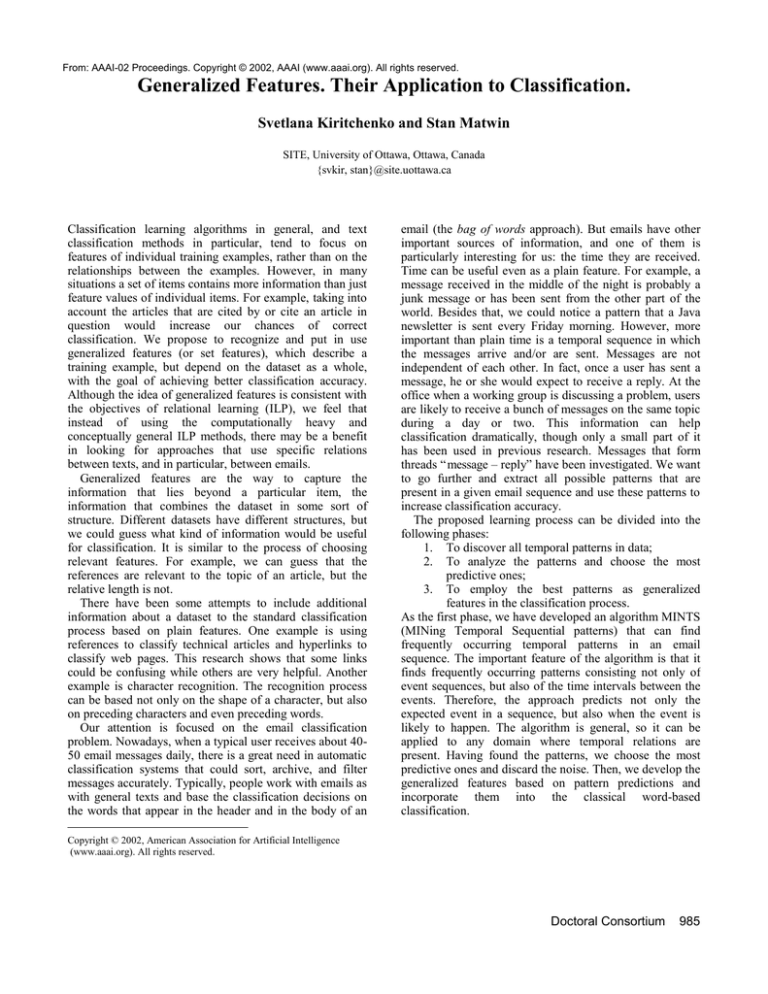
From: AAAI-02 Proceedings. Copyright © 2002, AAAI (www.aaai.org). All rights reserved.
Generalized Features. Their Application to Classification.
Svetlana Kiritchenko and Stan Matwin
SITE, University of Ottawa, Ottawa, Canada
{svkir, stan}@site.uottawa.ca
Classification learning algorithms in general, and text
classification methods in particular, tend to focus on
features of individual training examples, rather than on the
relationships between the examples. However, in many
situations a set of items contains more information than just
feature values of individual items. For example, taking into
account the articles that are cited by or cite an article in
question would increase our chances of correct
classification. We propose to recognize and put in use
generalized features (or set features), which describe a
training example, but depend on the dataset as a whole,
with the goal of achieving better classification accuracy.
Although the idea of generalized features is consistent with
the objectives of relational learning (ILP), we feel that
instead of using the computationally heavy and
conceptually general ILP methods, there may be a benefit
in looking for approaches that use specific relations
between texts, and in particular, between emails.
Generalized features are the way to capture the
information that lies beyond a particular item, the
information that combines the dataset in some sort of
structure. Different datasets have different structures, but
we could guess what kind of information would be useful
for classification. It is similar to the process of choosing
relevant features. For example, we can guess that the
references are relevant to the topic of an article, but the
relative length is not.
There have been some attempts to include additional
information about a dataset to the standard classification
process based on plain features. One example is using
references to classify technical articles and hyperlinks to
classify web pages. This research shows that some links
could be confusing while others are very helpful. Another
example is character recognition. The recognition process
can be based not only on the shape of a character, but also
on preceding characters and even preceding words.
Our attention is focused on the email classification
problem. Nowadays, when a typical user receives about 4050 email messages daily, there is a great need in automatic
classification systems that could sort, archive, and filter
messages accurately. Typically, people work with emails as
with general texts and base the classification decisions on
the words that appear in the header and in the body of an
email (the bag of words approach). But emails have other
important sources of information, and one of them is
particularly interesting for us: the time they are received.
Time can be useful even as a plain feature. For example, a
message received in the middle of the night is probably a
junk message or has been sent from the other part of the
world. Besides that, we could notice a pattern that a Java
newsletter is sent every Friday morning. However, more
important than plain time is a temporal sequence in which
the messages arrive and/or are sent. Messages are not
independent of each other. In fact, once a user has sent a
message, he or she would expect to receive a reply. At the
office when a working group is discussing a problem, users
are likely to receive a bunch of messages on the same topic
during a day or two. This information can help
classification dramatically, though only a small part of it
has been used in previous research. Messages that form
threads “message – reply” have been investigated. We want
to go further and extract all possible patterns that are
present in a given email sequence and use these patterns to
increase classification accuracy.
The proposed learning process can be divided into the
following phases:
1. To discover all temporal patterns in data;
2. To analyze the patterns and choose the most
predictive ones;
3. To employ the best patterns as generalized
features in the classification process.
As the first phase, we have developed an algorithm MINTS
(MINing Temporal Sequential patterns) that can find
frequently occurring temporal patterns in an email
sequence. The important feature of the algorithm is that it
finds frequently occurring patterns consisting not only of
event sequences, but also of the time intervals between the
events. Therefore, the approach predicts not only the
expected event in a sequence, but also when the event is
likely to happen. The algorithm is general, so it can be
applied to any domain where temporal relations are
present. Having found the patterns, we choose the most
predictive ones and discard the noise. Then, we develop the
generalized features based on pattern predictions and
incorporate them into the classical word-based
classification.
Copyright © 2002, American Association for Artificial Intelligence
(www.aaai.org). All rights reserved.
Doctoral Consortium
985

